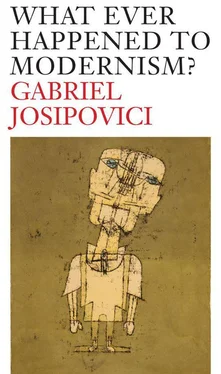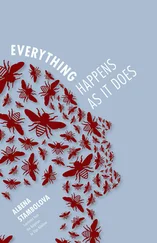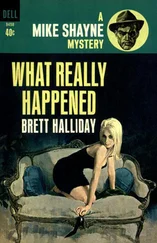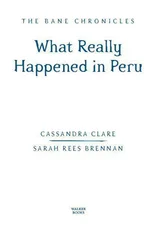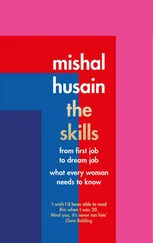Or if the music sticks, if the anecdote
Is false, if Crispin is a profitless
Philosopher, beginning with green brag
Concluding fadedly, if as a man
Prone to distemper he abates in taste,
Fickle and fumbling, variable, obscure,
Glozing his life with after-shining flicks…
Making gulped portions from obstreperous drops,
And so distorting, proving what he proves
Is nothing, what can all this matter since
The relation comes, benignly, to its end?
The ‘relation’ is of course both the telling and the fact that Crispin is not alone in the world, even if he sometimes feels that way. And so, after a gap to let the question mark do its work, the last line of the poem compresses all its themes together, playing with the meaning of ‘clipped’: trimmed, as of a hedge, and, in its old meaning, found in Shakespeare, embraced: ‘So may the relation of each man be clipped.’
What Stevens learned in ‘The Comedian as the Letter C’ is that, like Picasso, it was the angel of reality he was after, but that to get at him you had to work dialectically and by indirection. It was a lesson that would stand him in good stead in the years to come.
Over in Europe at the close of that same crucial decade, the second of the century, Franz Kafka brought out one of the few books he would publish in his lifetime, a collection of fourteen stories, mainly written during the war, entitled A Country Doctor . As always, Kafka was meticulous about the order and the arrangement. The story he chose to open the collection is no more than a page long, but it is one of his greatest. It is called ‘The New Advocate’, and is, in a sense, his ‘Prufrock’, his ‘Comedian as the Letter C’. ‘We have a new advocate, Dr. Bucephalus’, it begins. ‘There is little in his appearance to remind you that he was once Alexander of Macedon's warhorse. Of course, if you know his story, you are aware of something.’ But even the usher at the law courts, who presumably does not know his story, though he is, it is true, ‘a man with the professional eye of one who regularly places small bets at racecourses’, finds himself ‘running an admiring eye over the advocate as he mounted the marble steps with a high action that made them ring beneath his feet’.
However, this high-stepping urge is now kept well under control, for ‘nowadays … there is no Alexander the Great’. Of course, even in Alexander's day, ‘the gates of India were beyond reach, yet the King's sword pointed the way to them’. Today, however, no-one even points the way — for in which direction would they point? Many, it is true, still carry swords, ‘but only to brandish them, and the eye that tries to follow them is confused’. So ‘perhaps it is really best to do as Bucephalus has done, and absorb oneself in law books. In the quiet lamplight, his flanks unhampered by the thighs of a rider, free and far from the clamour of battle, he reads and turns the pages of our ancient tomes.’
A loss has been incurred, yet the last little paragraph is neither pathetic nor anguished, merely resigned: ‘Perhaps it is really best to do as Bucephalus has done.’ Bucephalus, like Prufrock, like Crispin, can no longer summon up the energy to fly in the face of reality, like Don Quixote. His flanks are at least unhampered by the thighs of any rider — yet we recall the high action of his legs as he strides up the staircase of the law-courts and feel the waste: a rider pressing into those flanks would at least have given him a goal, a sense of direction. Instead, he consoles himself by poring over ancient law books, though whether he does this out of a sense of duty, or desire, or merely to pass the time, the story does not say.
The fourth of my sad clowns comes in the form not of words but of images — and a very unusual image it is. Here is what its creator had to say about it many years later:
From Munich on, I had the idea of the Large Glass. I was finished with cubism … The whole trend of painting was something I didn't care to continue … There was no essential satisfaction for me in painting ever. And then of course I just wanted to react against what the others were doing, Matisse and all the rest, all that work of the hand. In French there is an old expression, la patte , meaning the artist's touch, his personal style, his ‘paw’. I wanted to get away from la patte and from all that retinal painting.
Duchamp was to describe the work that he now (1914–21) embarked on as ‘a delay in glass’, but the title he gave it was: La Mariée mise à nu par ses célibataires, même (‘The Bride Laid Bare By Her Bachelors, Even’), an odd title couched in odd grammar, but not at all untypical of Duchamp and actually a good deal more comprehensible than some. On two large rectangular glass panels, one below the other, each encased in a metal frame, the whole free-standing, a number of elements are painted: in the top panel is the Bride herself, a wavy cloud lacking all clear outline, with three square holes in the middle, and, hanging from the left-hand side, something like a pulled-out wall socket, giving the whole a vaguely insect-like quality; in the lower panel there is a precisely painted larger-than-life chocolate-grinder (a faithful copy of a machine found by Duchamp in his native Rouen), a group of what could be stylised clothes-pegs, a kind of pulley contraption, and a number of circular diagrams such as one finds in opticians' offices, above which an eyehole has been cut into the glass.
It may help to recall Either/Or , the first part of which is spoken/written by a young man, a bachelor, only too aware of his historical condition and the impossibility of meaningful choice in today's world, and the second by a maturer man, a Judge, happily married, who argues that once the young man has made the leap into marriage, the transition from bachelor to husband, all his troubles will be solved. The problem is that the young man feels he has no grounds for choosing one woman rather than another, and, moreover, he has the sneaking suspicion that any choice would be a disaster, robbing him of life's most precious quality, freedom. Yet at the same time he acknowledges — and he is quite genuine here — that the Judge may well be right and that it is his fault that he cannot make the leap into marriage. The book, as the title implies, sets the two up against each other but refuses to occupy a position above both, from which it might be possible to adjudicate between them. Duchamp's Large Glass is his Either/Or . It is also his ‘Prufrock’, his ironical self-portrait as an artist in troubled times. It is both his farewell to painting and his examination, tongue in cheek as always, of why painting has reached the pass it has. It is the early twentieth-century version of Durer's Melencolia I .
The Bachelors below may grind out their chocolate, but they are clearly powerless to reach the Bride, just as the artist can no longer approach his sacred subject. The erotic subtext is clear and again typical of Duchamp, as it is of Sterne: the futile, mechanical, masturbation of the Bachelors will never lead to any congruence with the Bride, far less to any offspring. But this is perhaps too simple. After all, there is not one bridegroom or even fiancé, but a group of Bachelors — who perhaps are doomed to remain bachelors because what they long for cannot be attained. Thierry de Duve suggests that the idea of stripping the Bride bare relates to Duchamp's sense of the new moves towards abstraction, which painters like Kandinsky, Malevich and Mondrian were convinced would lay bare the essence of art (once figuration, the world, had been stripped away). He also suggests that the chocolate-grinder relates to the old notion, already touched on above, that once painters used to grind out their own colours, but now buy them ready-made. The chocolate grinder is thus both an emblem of industrialisation, that industrialisation which has rendered painting meaningless, and an emblem of a kind of pre-industrialisation (since now we more often buy our chocolate already ground), for which we are all, and artists in particular, so nostalgic.
Читать дальше
